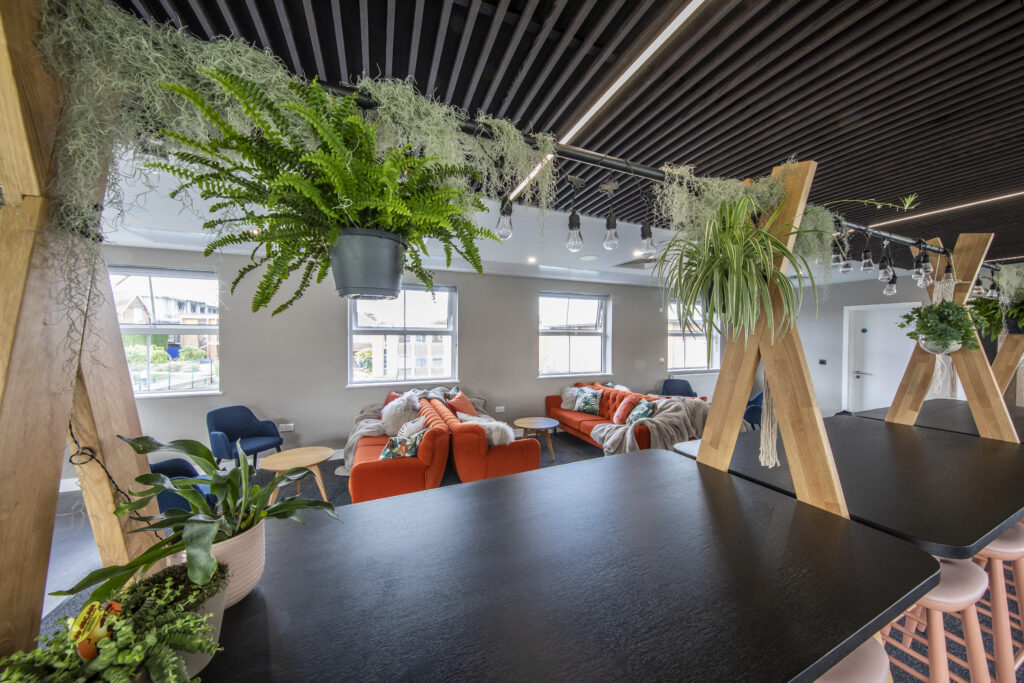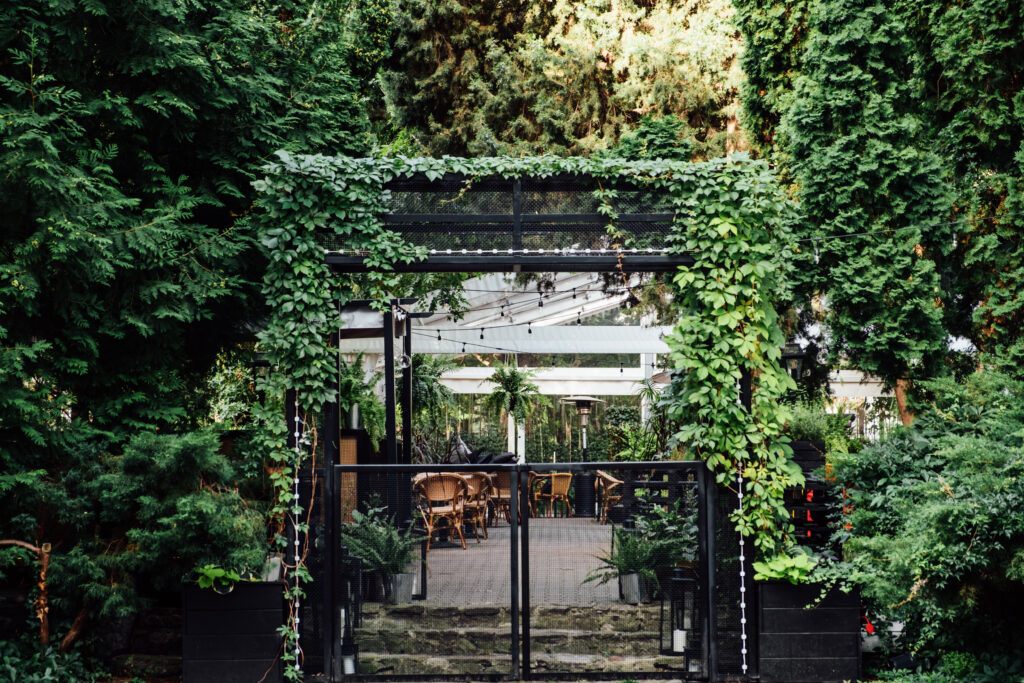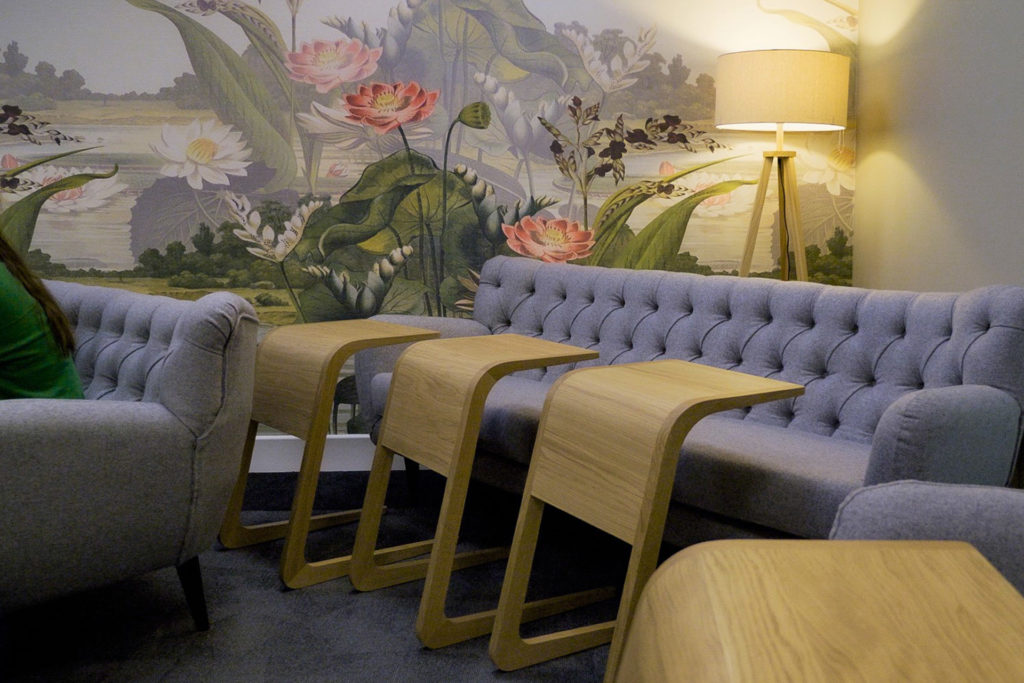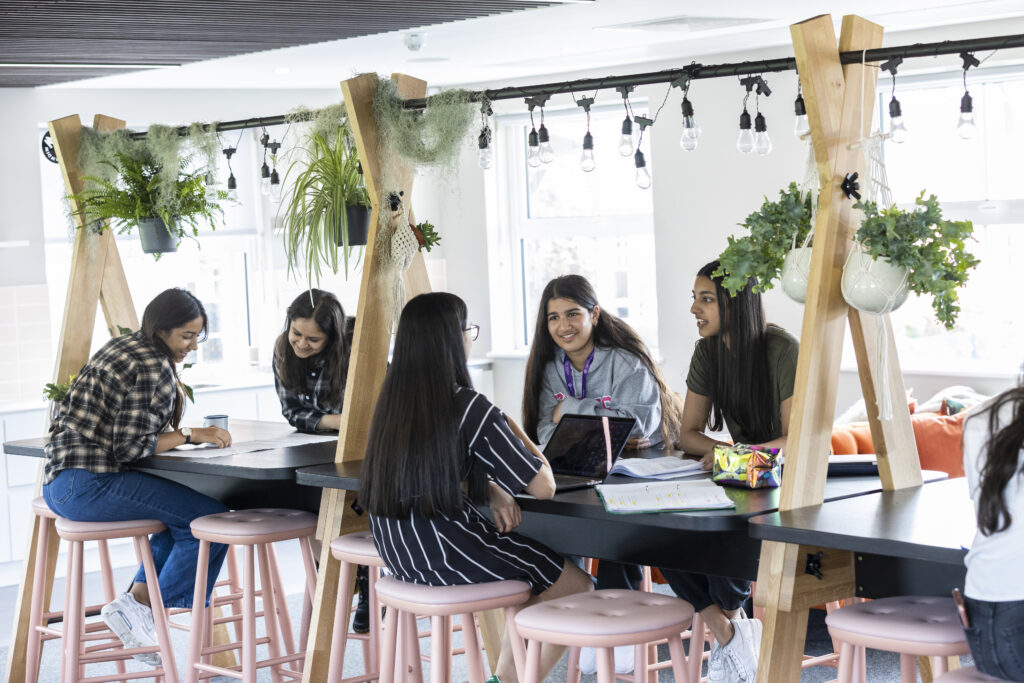What is a Biophilic Learning Environment? And more importantly, how can you create one for your school and improve your students’ engagement and focus whilst learning?
We look at the specific materials and colours that can be used to create a Biophilic learning environment in independent schools using natural materials such as wood and stone, and how they align with the Biophilic design of classrooms and common areas.
Textures, wall colours and finishes can be used to great effect to reflect natural environments and instil a natural, calming atmosphere that increases achievement and wellbeing (Determan et al, 2019).

What is Biophilia?
The term ‘Biophilia’ means ‘a love of life or living things’ and is derived from the Greek word ‘philia’ (love of). Biophilia is the innate interdependence between people and the natural world (Wilson, 1984); Biophilic design is therefore the process for designers to introduce elements from nature to an alternative setting such as a classroom – bringing the outside in.

The Biophilic Learning Environment
The Biophilic learning environment is shown to have multiple benefits for both students and staff alike (Ghaziani et al, 2021). Among these nature based solutions are higher levels of problem solving, motivation and wellbeing with reduced anxiety.
Views of nature instil calm and secure feelings and can even heal patients quicker in hospitals (Ulrich 1984).
In independent schools, connections to nature can be achieved using large graphics of the environment in hallways and classrooms, natural materials such as wood and colours that suggest earth tones or green hues.
Envoplan’s experienced design team can advise on how to maximise your Biophilic learning environment whether your school is traditional or modern; use plants, moss walls and sustainable, environmentally friendly organic materials for resources instead of plastic wherever possible, for example, wood, stone and recycled fabric
Views of nature instil calm and secure feelings and can even heal patients quicker in hospitals (Ulrich 1984).
In independent schools, connections to nature can be achieved using large graphics of the environment in hallways and classrooms, natural materials such as wood and colours that suggest earth tones or green hues.
Envoplan’s experienced design team can advise on how to maximise your Biophilic learning environment whether your school is traditional or modern; use plants, moss walls and sustainable, environmentally friendly organic materials for resources instead of plastic wherever possible, for example, wood, stone and recycled fabric

Biophilic Features
Our research shows that only 22% of learning environments contain Biophilic elements but creating a Biophilic feature in your school will bring a sense of harmony to provide a stunning aesthetic whatever the layout. Independent schools can introduce a range of elements with lighting, acoustics, materials and resources all aligned to offer the healthiest school environment for your students.
A range of natural textures inspire students to interact with their surroundings and minimises background noise to assist with better concentration; a range of colours in warm tones provide a high level of stimulus and differentiated cognition pathways, whilst cooler options reduce stimulation and increases feelings of wellbeing. Earthy tones of green relax the nervous system and reduces stress, with the use of warm neutrals or deeper hues in main learning areas, soft shades and small amounts of brighter colour can define boundaries or as a background to displays and charts.
In addition, ambient noise, natural lighting solutions and wall graphics can make your learning spaces more welcoming, less sterile and encourage increased interest and stimulation.
A range of natural textures inspire students to interact with their surroundings and minimises background noise to assist with better concentration; a range of colours in warm tones provide a high level of stimulus and differentiated cognition pathways, whilst cooler options reduce stimulation and increases feelings of wellbeing. Earthy tones of green relax the nervous system and reduces stress, with the use of warm neutrals or deeper hues in main learning areas, soft shades and small amounts of brighter colour can define boundaries or as a background to displays and charts.
In addition, ambient noise, natural lighting solutions and wall graphics can make your learning spaces more welcoming, less sterile and encourage increased interest and stimulation.
Give your students the best chance of all round success and personal development with Envoplan’s Biophilic designs.
References
Determan. J, et al, (2019). The Impact of Biopilic Learning on Student Success
Wilson. O, (1984); Biophilia
Ghaziani. R, et al, (2021). Biophilic Design Patterns for Primary Schools
Ulrich. R, (1984). View through a window may influence recovery from surgery



